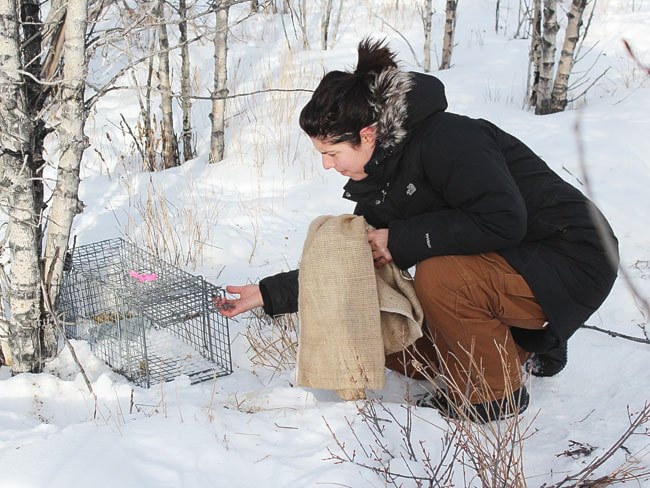Peering out from its burrow, the snowshoe hare carefully scans the landscape for one of its many predators - the lynx, coyote, fox, wolf and marten all pose a constant threat.
But aerial hunters such as hawks, owls and eagles also contribute to the high mortality rate among juvenile hares, only 15 per cent of which will survive to breed the following spring.
Sophia Lavergne, a PhD candidate in the department of ecology and evolutionary biology at the University of Toronto, has made several trips to the Yukon since 2011 to measure the impact of predator-induced stress on showshoe hares.
Based out of the Kluane Lake Research Station, she’s carried out experiments alongside Patrick McGowan, Charles Krebs and Rudy Boonstra, who have been collecting data on the species for about 40 years.
Research has shown that when a pregnant hare is stressed by predator exposure, it has fewer babies, which are generally smaller and lighter than the babies of unstressed mothers.
It’s also known that the same pregnant hares will have offspring that are stressed, too.
Lavergne is interested in finding out how this particular stress inheritance occurs, its effects on the health, behaviour and survival of those offspring and how the outcomes affect the snowshoe hare population cycle.
“There’s a rich history of research here that you don’t get elsewhere in Canada,” she said.
“There’s a really good long-term data set that’s available, to anyone who wants to use it. I wouldn’t be able to work anywhere else without having those numbers, which are critical in being able to make inferences and estimates based on predator and hare numbers.”
Historical records have shown that snowshoe hare populations run on a 10-year cycle.
The number of hares in the Yukon peaked in 1981, 1990, 1998 and 2006, according to the Environment Yukon website, and each peak was followed by a rapid decline over the next few years.
“So, even after numbers of hares and their predators crash, the few remaining hares continue to produce low numbers of young, which contributes to the delay before the next cyclical boom,” according to the website.
Predation appears to be the key factor in the cycle, and Lavergne is using experiments to find out more.
Researchers can measure the stress levels of hares by measuring the cortisol metabolites level in their droppings, Lavergne said.
She’s been getting help from residents in Watson Lake and Faro to collect fecal samples.
“It’s a non-invasive method, and you can collect it either from trapped hares or from walking in the woods,” she said.
“It’s a really nice, non-stressful way to get an idea of the stress levels in the population. Traditionally it was done using blood tests.”
The results will give her a better idea of whether stress levels in hares are homogenous across the territory, she said.
Lavergne usually comes to the Yukon for a few weeks in the winter, when the hares are non-reproductive and it’s easier to assess their stress levels.
When she returns in the summer, pregnant hares are lured into traps with alfalfa and apples.
They are tagged, weighed and measured. Predator simulation experiments are carried out, such as exposing them to trained dogs, Lavergne said.
Then, the reproductive outputs are compared. In the past, juvenile hares were trapped and monitored in a test arena while the silhouette of a hawk was passed overhead.
Measuring the behaviours can give an idea of how bold or fearful the hares are, and how vulnerable they might be to predation.
After Lavergne’s upcoming summer visit, she’ll compile all the data from her research and hopes to publish the results in a scientific journal.
“And hopefully get my PhD,” she added.
“The Yukon’s a great place to work and the people are really supportive.”
Contact Myles Dolphin at
myles@yukon-news.com
